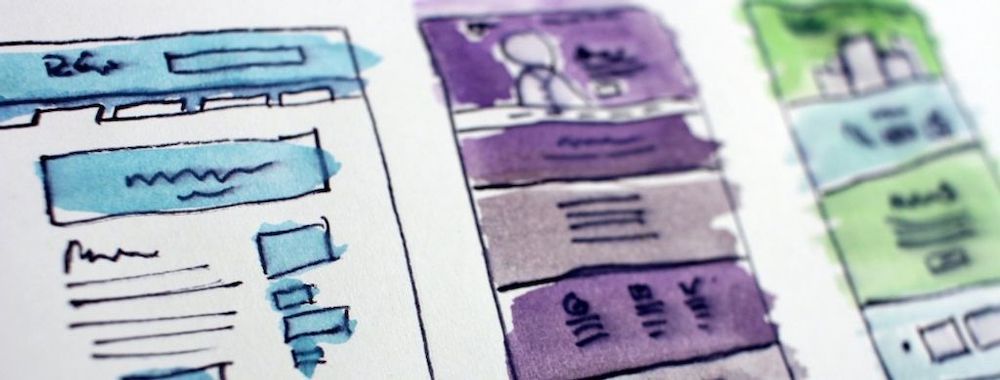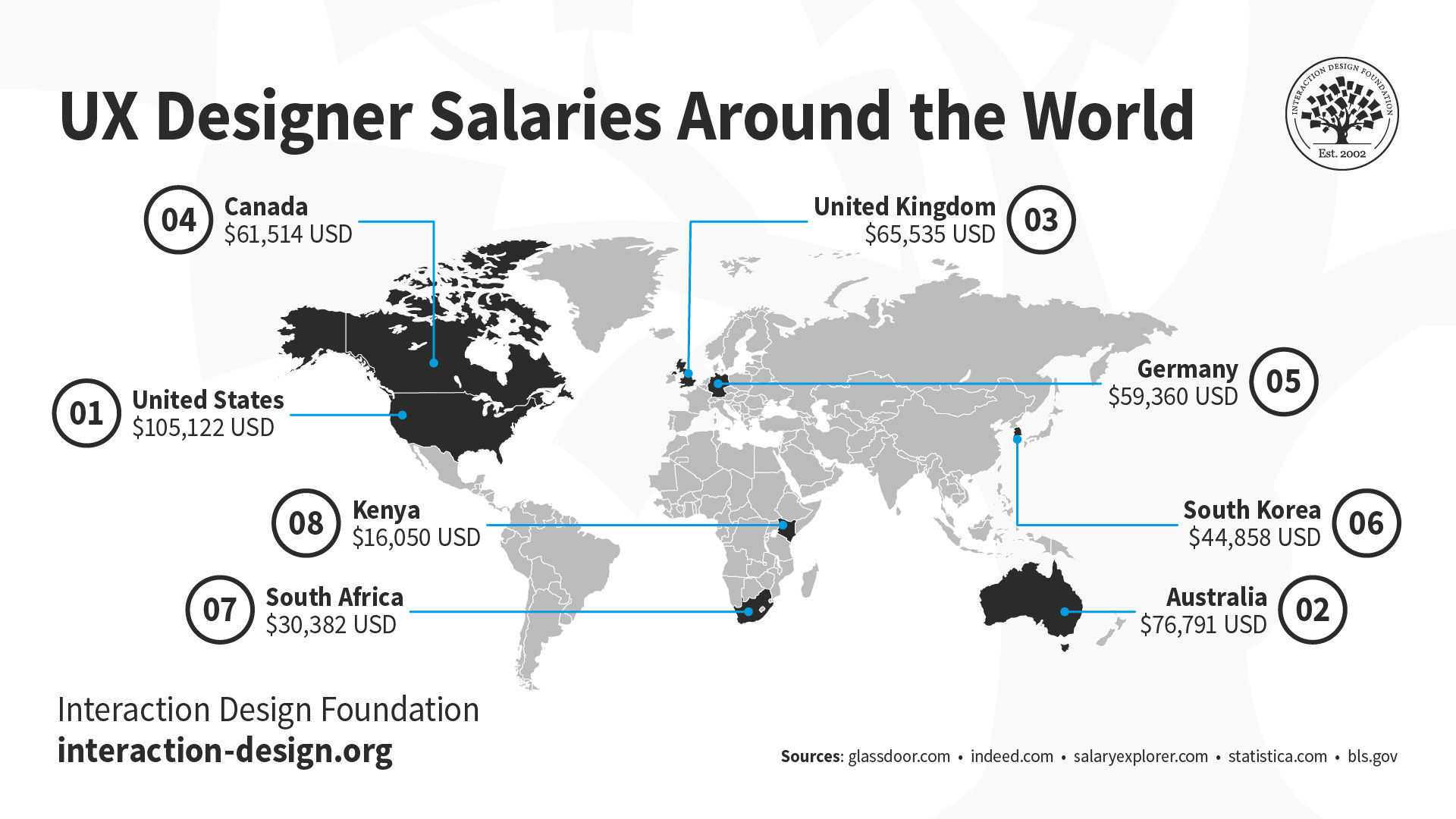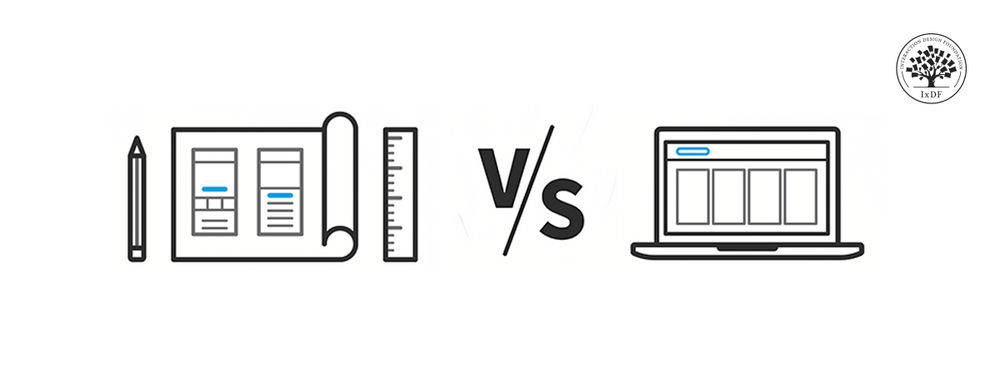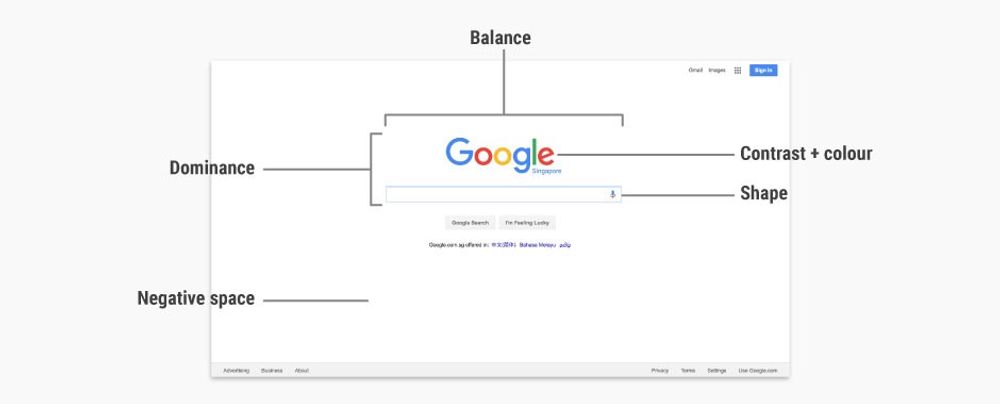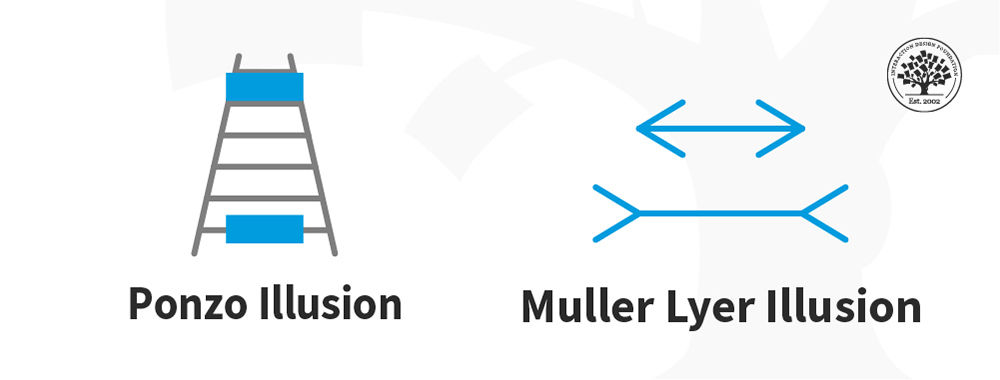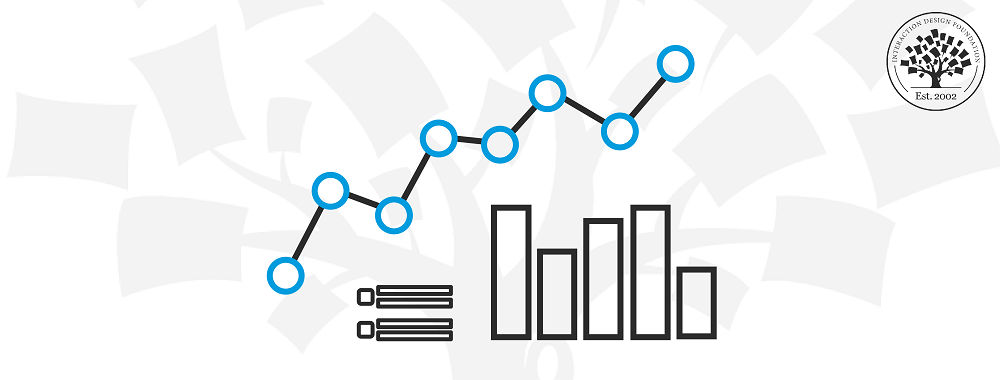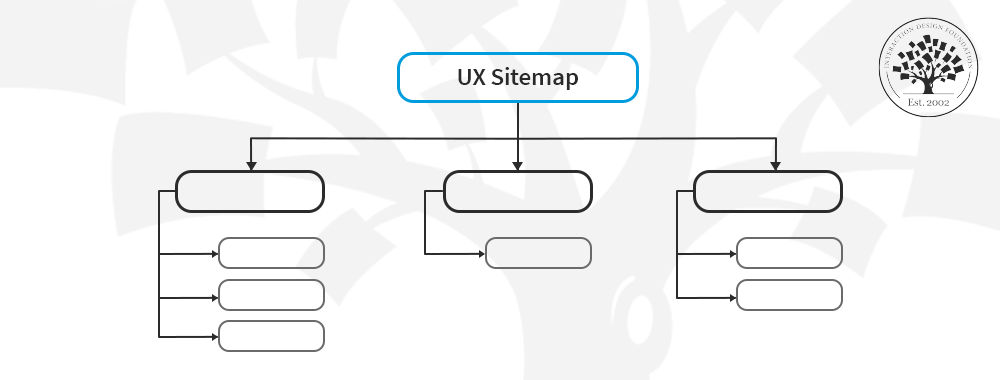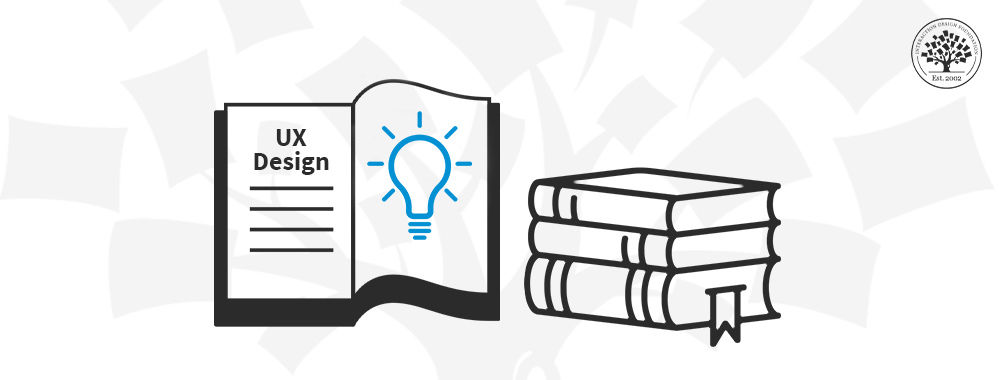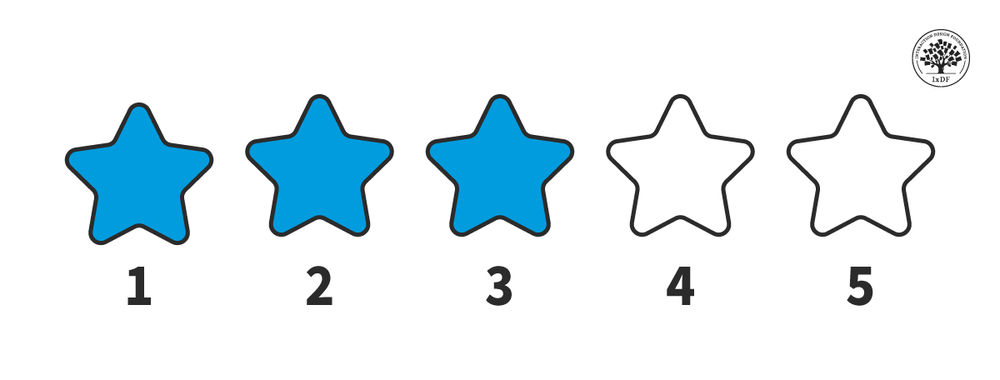Are you intrigued by UX (User Experience) design? Is it something you’ve simply read about, dabbled with, or considered taking up full-time? UX design is a dynamic, interdisciplinary industry that’s constantly evolving. There is no better time to become a UX designer—global demand, countless job opportunities, low barriers to entry, accessible online resources, affordable UX certifications, and the point that a UX designer salary is well above the average salary. Have we got your attention? Take the opportunity to combine your creative potential with your analytical abilities to make the world a better place through good design. Here are ten important reasons that you should become a UX designer.
Before we dive into why you should become a UX designer, let’s look at what UX design is.
Show
Hide
video transcript
- Transcript loading…
1. Make an Impact
As a UX designer you get to solve real-world problems, as well as the tiny, day-to-day, seemingly insignificant problems (that actually add up to a lot!). It’s all in the name, User Experience design—the user and their needs are at the forefront of the design process, whether it’s an app, a website, financial services, or the layout of a shop. When we hear “UX design”, we tend to think of customers, designing and selling products. But in reality, a user can be a patient at a hospital, a pedestrian, your grandmother, or you in many, many contexts. The world is filled with good and bad design, but imagine that good design reigned—imagine how much better our experiences and lives would be. There would be greater inclusivity and accessibility, two important aspects of UX design.
Don Norman is the grandfather of UX design and author of The Design of Everyday Things, essentially the book of user-friendly design. After 60 years in the field, he is appalled by the absence of consideration for elderly people. In a Fast Company article, the IxDF Board Member and former Apple Vice President argues that the world seems to be designed against the elderly. People are living longer, with average life expectancies increasing worldwide. While elderly people may have diminished senses and physical abilities, many are still healthy and active. From tiny text on important labels and instruction manuals to regular household objects that need a knife or set of pliers to be opened, life is harder to navigate when you get older. Even when products are designed specifically for older people, they tend to be ugly and demeaning. In 2017 the London’s Royal College of Art put on an exhibition at London’s Design Museum called “New Old”, which was later described as “Why you should be designing for your 73-year-old self” in another Fast Company article that Don Norman references. The exhibition explored how good design has the potential to enhance the experience of our later lives. It included The Scooter for Life, designed by PriestmanGoode which has three wheels for stability and a stylish pouch at the front for storing groceries—a far cry from the bulky and clumsy “mobility scooters” you see around.
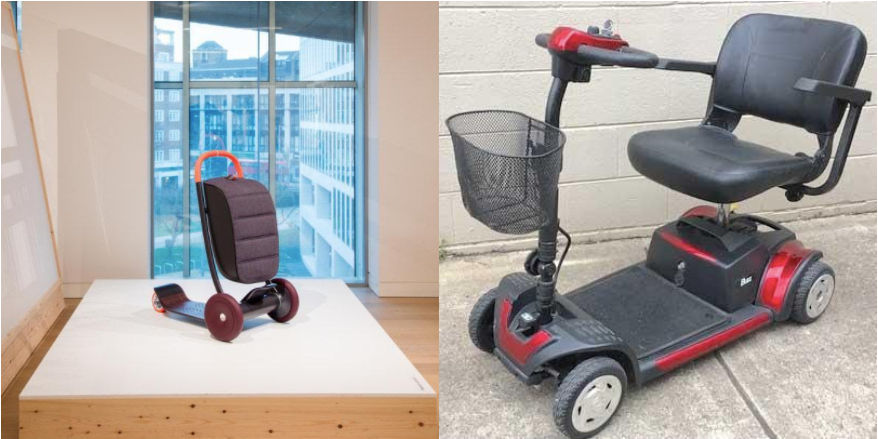
On the left is The Scooter for Life, designed by PriestmanGoode, which helps elderly people to zip around and buy groceries in a more stylish and efficient way than ever before. On the right is an old-fashioned, ungainly mobility scooter that can barely fit on a regular sidewalk, never mind a shopping aisle.
© The Design Museum, Fair Use
The same principles apply for digital design too. When designing an app or website for seniors, there are a few factors to consider; the font should be on the larger size, the navigation should be clear and uncomplicated, and the user should be able to understand its purpose immediately. Get to the point—your grandmother doesn’t want to spend hours fiddling around.
Ageist, a lifestyle website aimed at people over the age of 50, regularly updates their website to improve user experience. They use bright colors, have a simple navigation with menu items clearly displayed at the top of the homepage, and have a large search icon. Also, it only takes a couple of scrolls to reach the “end” of the site.
UX Design is deeply rewarding—you will discover infinite opportunities to improve and reinvent products that will enhance millions of lives.
2. It’s Creative and Logical
One of the most appealing and unique aspects of the UX design field is the synergy between creativity and logic. Let’s say you’re an enthusiastic DIY-er (upcycling and crafts) and even have your own DIY blog (you enjoy writing too!). You’re naturally creative but don’t have technical expertise; just the term “coding” frightens you—no problem! You don’t need to be technical to get into UX design. Similarly, if your strengths lie in mathematics or coding, UX design gives you the opportunity to use those abilities, while harnessing your innate creativity (yes, you too are creative!). In your UX design career, you will use your logical side to create practical solutions for users’ needs. Practicality is not enough, however; the solutions also have to be creative and not just in terms of aesthetics, but in terms of functionality and usability also. Think of your smartphone; it serves many practical purposes, chiefly communication. But that alone can’t make a successful product. How does it make a user feel? Is it pleasing to look at? What makes it special enough for someone to choose it over another smartphone? Think about the Apple iPhone. It expertly balances aesthetics with functionality. While some smartphones have unintuitive start-ups, where you find yourself paging frantically through an instruction manual, the iPhone works straight out of the box, pleasantly guiding you through the set-up process. The solutions you create shouldn’t compromise usability over aesthetics and vice versa—it’s all about balance.
3. Become an In-Demand Professional in a Growing, Multidisciplinary Industry with Low Barriers to Entry
In 2020 there was a 289% increase in employers’ interest in UX design in the United Kingdom. The report by Hired.com, Mind The Gap, also found that UX design was one of the skills with the biggest gap in supply and demand. LinkedIn listed UX design as number 5 on their list of 15 skills that will get you hired in 2020. In CNN Money’s Best Jobs in America 2015 report, they estimated that UX design will grow by 18% between 2015 and 2025. You will find thousands of job listings on Indeed and LinkedIn, particularly in the US, UK and Canada with countless remote options too. As more organizations embrace the importance of UX design, job opportunities and job security is set to grow even more.
We know that UX design is both creative and analytical, but it stretches even further than that. The field encompasses numerous other disciplines, such as psychology, technology, visual design and sociology. In fact, it is the definition of multidisciplinary. This makes the nature of the work more exciting, rewarding, and challenging, but also lowers the barriers to entry. Whether you’re a psychologist in training or have practiced for many years, you can apply your expertise to UX design. You already have a big head start when it comes to understanding users’ behavior. Even if the field you’re currently in isn’t directly related to UX design or the disciplines mentioned above, the skills and abilities you already possess will benefit your UX career journey.
4. It’s Relatively Easy to Switch to a Career in UX Design
It’s never too late to change careers. As society evolves, new exciting professions come up. In fact, it wasn’t until 1995 that Don Norman coined the term user experience (UX) and it wasn’t until the early 2000s that UX designer became a real job. There are many reasons why becoming a UX designer is an exciting prospect, and there are many paths you can follow to become one. Therefore, don’t let your background hold you back in your journey towards becoming a UX designer, instead use it to stand out and learn what you need to take the first step. Many of the skills a UX designer needs to succeed are, in fact, transferable from other professions. Your previous experience will always be an asset.

Let’s look at specific examples of how you can change your career to UX design:
If you’re a graphic designer you’re in luck since your skills in emotional design, creative thinking and prototyping will serve you well. You will need to focus on building a user-centric mindset and learn how to work with iterative processes and multidisciplinary teams. Find out more about how to change your career from graphic design to UX design here.
If you’re a marketing professional and you would like to become a UX designer you can harness your research and customer—user—psychology skills. Your previous experience in how to make a product desirable and appealing for your customer will benefit you. You will need to change your conversion-focus mindset to a user experience one, also you will need to learn about individual behaviors. If you’re thinking about taking your first steps towards UX design, find out for information here.
If you’re a web designer you’re already used to working in multi-disciplinary teams and you’ll fit right in. In addition, you have a lot of experience solving different types of problems and this is a skill that will transfer smoothly. You will need to shift your focus from technology to user experience. You’ll need to pay attention to how the user feels when using a product besides focusing on whether the technology works well or not. If becoming a UX designer sounds like an enticing prospect for you, find out more practical information here.
If you’re a business manager you can definitely take advantage of your “big picture thinking”, and this will help you make better judgment calls for your users. You’ll have to learn how to build a user-centric mindset and familiarise yourself with the design processes. Find out more about how to switch from a business management career to UX design here.
If you’re a software developer you’re already experienced in creative problem solving and testing, and you have a constant-learning mindset. These skills will help you become an outstanding UX designer. You’ll have to shift your focus from the technology itself to how your users feel when using it. If you can build a user-centric mindset you will be able to have a successful career as a UX designer. If you’d like to know more about this particular career change, read this piece.
If you want to change your career and become a UX designer, but your background doesn’t match any of the previous examples don’t worry. Think about what your current career has in common with UX design and use that as a starting point. Once you’re more familiar with UX design you’ll be able to bring your unique point of view and stand out to build a successful career. There are plenty of options to gain the knowledge you need that are compatible with your current career and schedule. Be assured that you can make the first step towards becoming a UX designer in a smooth and smart way.
5. You Don’t Have to Master Tools
Believe it or not, UX tools are less important than you might think. While they’re loved by professionals in the field, with new ones released every year, it can be difficult to stay on top of them. UX tools (like Sketch, InVision and Adobe XD) are constantly evolving (with monthly or more frequent updates), so keeping up with them can be overwhelming and pull focus from your actual work. Happily, though, what you do, your knowledge, skills and how you apply them are far more significant. Tools come and go, but UX principles and processes remain. Moreover, there’s no guarantee that the tools you’re currently using, or will use in a future role, will be the same in your next job or company. Lastly, there are many principal UX techniques that don’t require tools, such as usability testing, user interviews and card sorting.
One of the most common misconceptions amongst newcomers is that UX designers should know how to code. While it is helpful for designers to understand how the underlying technology works to be able to design for it, this is not essential. The extent to and you can pick up the additional skills. Here’s an in-depth look at the role of code in a UX designer’s skill set.
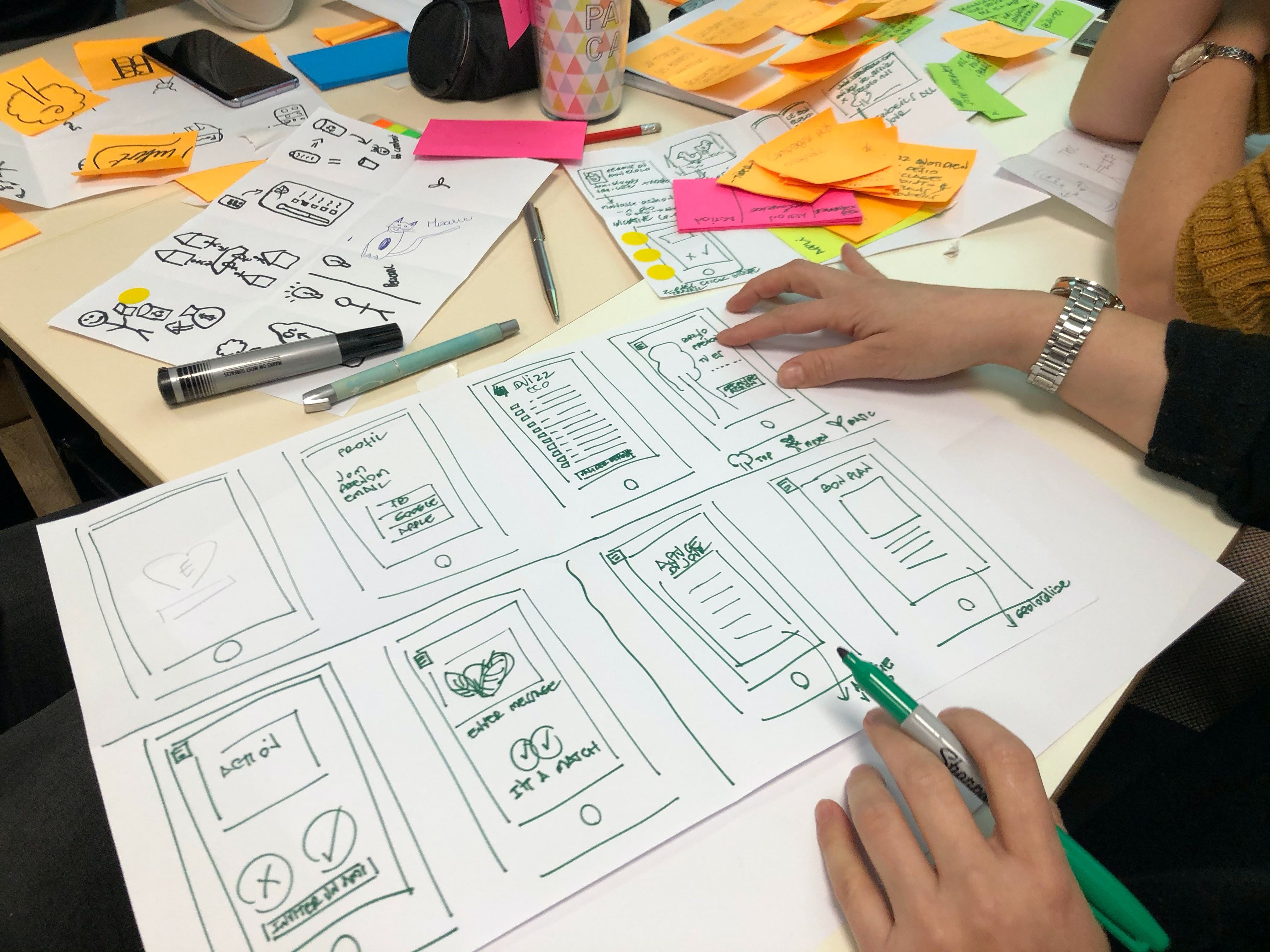
The best tools are free: your favorite marker and piece of paper.
© Amelie Mourichon, Unsplash License
6. Opportunities for Career Growth, Skills Development and Specialization
UX design embraces both soft and hard skills. Here are some of the skills you can expect to develop in your UX design career, both through a UX certification and on-the-job learning (this is not an exhaustive list; there are many more UX-related skills to learn!):
Critical thinking
Research
Visual communication
Writing
Coding and development
Just as your skillset can be applied to a career in UX design, the skills that you learn in a UX design career are things you can transfer to a specialization or a different field altogether!
The range of different UX roles and specializations within the field include these:
UX designer
Product designer
Information architect
Visual designer
Customer experience designer
Content strategist
UX design is a broad, innovative field that presents endless possibilities for learning, growth and development.

7. Accessible and Affordable UX Certifications
There’s more good news; you don’t have to go to university or get a degree to get into UX design. You can start to teach yourself with the help of online resources. Begin with a browse through our library of open-source, open-access UX literature.
A UX certification can aid greatly in your quest to become a UX designer. A comprehensive portfolio and practical expertise is essential to secure your dream UX job. IxDF courses offer portfolio exercises and practical project experience so that you can build your portfolio while you learn.
Choosing the right UX certification can be challenging, there’s a lot of choice out there, and conflicting reviews and information don’t help matters. Ultimately it is crucial to do your research and ask questions to ensure that your specific goals and requirements are met.
Since launching early in 2021, the Google UX Design Professional Certificate presented by Coursera has seen over 300,000 enrollments. Have you considered it as an option? It provides a firm foundation in UX design, so it's a great starting point if you’re new to the field. However, if you’re looking for something more hands on with constructive feedback, Google’s peer-reviewed approach may not be for you. Discover its benefits and how it compares with IxDF in this article.
CareerFoundry’s UX designer bootcamps offer 1:1 mentoring and a job guarantee, so it’s another great option to consider. However, the bootcamps are only available if you’re located in the USA, UK, Canada, the EU, Australia and New Zealand.
Udemy has a wealth of courses in countless disciplines, including UX, and you pay per course so it’s worth investigating if you want to dip your toes in. But what they make up for in sheer course volume they lose in quality as courses are managed by separate entities and not audited by Udemy.
The Nielsen Norman Group is a leading consultancy in UX design and offers a great range of classroom based training for aspiring UX professionals. Their courses are offered on an international basis, so you will likely have to wait a while before there’s one in your area.
Ready to start your UX career journey right now? Check out the IxDF’s range of self-paced, industry-recognized courses and Master Classes.
With the IxDF, you can choose from a range of educational materials, structured in different ways to suit your learning style. With our industry recognized courses that cover the entire spectrum of UX design, you can dive deep into each concept at your own pace and get an industry-recognized certificate. If time is a constraint, IxDF’s Master Classes, at an average length of 1 hour, are a great way to dip your feet in the UX waters with a low time commitment.
8. Join a Thriving Community
The UX design community is expanding. You will be able to connect with like-minded people around the world, find inspiration, offer support and discover new opportunities. The Interaction Design Foundation have Local Groups so you can meet people in your area, form friendships or even meet your future employer (there are over 400 groups in 99 countries!). And you don’t need to be a UX designer to join—the only requirement is that you want to learn!
Show
Hide
video transcript
- Transcript loading…
9. Work Remotely
The COVID-19 pandemic forced so many of us into the remote working lifestyle. Economic ramifications of the pandemic and the absolute necessity to work remotely has encouraged countless organizations to reduce overheads and save precious time and resources by fully embracing the world of virtual working. Often going so far as to get rid of their physical offices entirely. Sites and applications like Zoom, Slack, Microsoft Teams and more have made remote work more straightforward and sophisticated than ever. There is no need for UX design work to be physically bound, essentially you just need a computer, internet connection, pen and paper to design, communicate with colleagues and or clients and perform any other related task. While it is not guaranteed that your future UX employer will work remotely, the reality is that it’s more likely than ever. And if you freelance, well, the way you work is completely up to you!
10. Salary Satisfaction
Meaningful work is one—if not the main—factor in job satisfaction. However, salary satisfaction is also important. If you feel your hard work isn’t being adequately rewarded, even though you enjoy it, you may start to seek out other opportunities. As UX designers are in high demand, but skills are in short supply, the average UX designer salary continues to rise. Naturally, salaries will vary depending on country, company, experience level and other factors, but the average annual UX designer salary according to Glassdoor is 105,122 USD in the United States, 48,755 GBP in the United Kingdom, 77,090 CAD in Canada and 1,389,256 INR in India. In each case, and in other countries across the world, the average UX designer salary is well over the national average salary. As demand for UX designers increases globally, so will UX designer salaries.
Like most other industries, the UX industry recognizes experience with higher pay; so, as you advance in your career, you can expect your salary to grow along with the rest of your career.
![map showing UX Designer salaries in USD across 8 countries]()
The Take Away
A UX design career is filled with possibilities, meaning and growth, and it’s all within arm’s reach. With a global UX skills shortage, high salaries and low barriers to entry, and the freedom to work anywhere, there is no better time to explore this career path. Don’t worry if you don’t have a design background or a degree in information systems; you can find free resources online and industry-recognized courses to kick-start your UX career today. What’s more, with a legion of modern problems to address—and likely many more new ones coming up ahead—this is a trade tailor-made for the 21st century, and far beyond. Choose this year as your year to make a difference with UX design.
References and Where to Learn More
Find more information on User Experience (UX) Design with IxDF’s Beginner Course.
Explore poor user experience for the elderly as told by Don Norman.
Read more about London’s Design Museum exhibition called “New Old”.
Take a deeper dive into various UX roles and specializations.
UX software tools aren’t quite as important as they might appear.
Check out the demand for UX designers, what employers are looking for and UX designer salaries.
See Hired.com’s "Mind the Gap" report on the UK’s technology skills gap.
The World Economic Forum reports that UX design is one of the most sought-after skills by employers.
Hero Image: © Hal Gatewood, UnSplash, Fair Use
